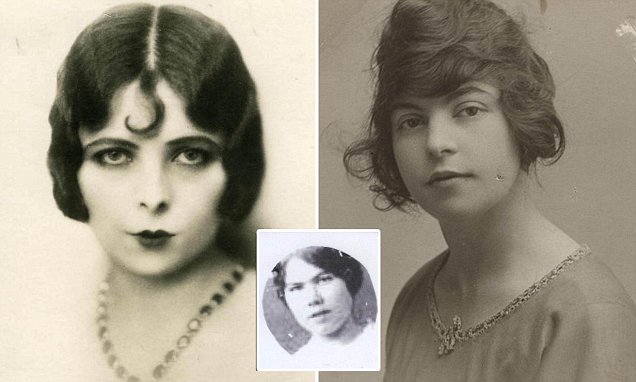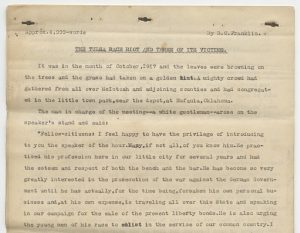The year was 1862, a time when thievery ran rampant in London’s lower class families, when women had little to no rights, and when men held the reins of society. Men ran social, economic, and political structures, but they also ran the underbelly of London. One of the most prominent gangs of London was the Elephant and Castle gang, an all-male gang that ran a complex system of robberies, kidnappings, and murder. At the same time, Mary Carr was born. Carr, born of a poor woman by the name of Jane Carr, and her husband, a notorious international thief and forger of bonds, John Carr, who led a life of crime. By 1881, Carr was already a notorious thief, with convictions starting as early as 1876 at the age of fourteen.1 With the help of the Elephant and Castle Gang, Mary Carr started the Forty Elephants, becoming their first queen due to her infamy for “fencing” or selling stolen property and pulling off successful heists. Though Carr was their first queen, the gang’s first public appearance was in an article from 1873, but some say the all female gang had been around since the 1700’s.2 Carr continued her career, changing her name several times along the way, including to Molly Mayne and Polly Carr. By 1903, she was notorious internationally, with a police report back in 1900 identifying her as the notorious Polly Carr, one of the most dangerous women in the London metropolis and Queen of the Forty Thieves (interchangeable name for Forty Elephants). Carr ran the Forty Thieves on and off between prison sentences until her suspected death in 1924.3 Carr successfully organized the Forty Elephants, but she started something else. She started the idea of a woman becoming a hoister, a person who stole and sold goods. Hoisters were becoming a lifestyle and profession for women who were locked out of the social lime light, but now could show off their skill and wealth. Becoming a hoister also meant breaking the social status of women since, with their new found wealth, they could become independent and support themselves. Unlike thieves and shoplifters, hoisters were known as professionals who were able to evade arrest and carry different aliases. Women who joined the hoister status unfortunately typically joined due to dire economic circumstances, since most shoplifters came from working and middle class families.4

After the death of Mary Carr came another Queen, Alice Diamond. Just like the former Queen, she also carried aliases, including Dolly Blake and Alice Blake.5 Born in Southwark, South London in 1886, Alice, just like Carr before her, was born to criminal parents. By seventeen, Alice already had a criminal record from thievery and was using a false identity even then. By the 1920’s, gangs plagued London and soon Alice’s record, just like Carr’s, got the attention of the Elephant and Castle Gang. Having just lost their previous Queen, the Elephant and Castle Gang eagerly accepted Alice as the next Queen. At 5 foot 8 inches, Alice was formidable and usually wore diamond rings that were used as impromptu brass knuckles during fights. After several fights with police, she was known as Diamond Annie.6 Unlike their counterparts, the Elephant and Castle Gang, Alice continued Carr’s work through the use of organized cells through various parts of London and later across Great Britain.

For women shoppers, most shops offered privacy to them when shopping. Alice, taking full advantage of that privacy, created special clothing for the women that led to the largest systematic shoplifting the country had ever seen. The clothing, lined with specially tailored pockets and multiple layers of cloth to hide goods between knickers, allowed Alice and her gang to launch several highly successful raids on London’s most elegant businesses.7 The creativity and boldness of the clothing ranged from false arms hanging out of long coats to large bags hanging underneath dresses. One nineteen-year-old thief caught in Bayswater, West London, had a bag made of Alpaca fur suspended at her waist that hung all the way down to her knees. When caught, police discovered forty-five stolen items inside.8 Alice ran the gang with precision and excellent timing. If their presence became too well known to police, Alice would order another cell in another city to take on more heists. Along with heists, many of the women would work as housemaids with credentials that usually mentioned other women. These women would ransack the home, or seduce the man into paying them for their silence.9 With the invention of the automobile, getting away became easier for the thieves. Once they pillaged stores or homes, the thieves would use (at the time) high powered automobiles to outrun police. Police documents show that even if the alleged thief was caught, the goods were not located within the vehicle. The reason for that was that the goods had already been relocated to another member of the gang (sometimes a male member) before or even during the escape. The goods would then be taken mostly by train, usually through an empty suitcase. The suitcases would be deposited around railroad stations, which would then be filled with the goods and shipped to “fences.”10 A “fence” was slang for someone who received and sold stolen goods. The goods, worth thousands of pounds, would sometimes end up in the hands of one of the most notorious fences, Ada Macdonald. MacDonald lived in a house in Walworth, South-East London and was the subject of many police raids. Each time, the authorities couldn’t locate any of the stolen goods.11
Just like other gangs at the time, Alice and the Forty Elephants guarded their territory ferociously. If a thief who was not part of their gang stole from a shop on their turf, a percentage was demanded from the thief, by an amount that depended on how much that thief stole. Those who refused were kidnapped, beaten, and subjected to ransoming. Along with demanding respect from other thieves, a list of codes known as the “hoister’s code” applied to all members of the gangs. The codes ranged from “No drinking before a raid, and early hours to bed” to “If a member is arrested others must be willing to provide an allibi.”12 Though the women were vicious, they were known to have an extravagant life. As Alice put it, they would “put on the posh,” meaning that they would dress and act of a higher social status. Combined with acting of a higher status, the Forty Elephants would host lavish parties, spend enormous amounts of money in pubs, clubs, and restaurants, fitting the 1920’s narrative of the aristocratic flapper with Alice at the forefront.13

Most members of the gang, being excellent hoisters, rarely got caught in the act. One notorious member, however, was caught. Her name was Maggie Hughes. In 1923, she had stolen a tray containing thirty-four diamond rings. While running out of the store, she ran straight into the arms of a police officer. On December 20, 1925, Alice’s rule came to an end after she and Hughes incited a riot against a former member of the Forty Elephants. Alice was jailed for eighteen months while Hughes was jailed for five.14

By the time of Alice’s release, another thief by the name of Lillian Rose Kendall had taken over the gang. Seeing how energetic, young, and creative Kendall was, she handed her position over to Kendall. Kendall, nicknamed the “Bobbed Hair Bandit” because of her short fringe and side curls, was a daring driver specializing in smash and grabs. On several occasions, Kendall used her car as a way to smash into store fronts such as Cartier’s on Bond Street.15
After Alice left the gang, their power and influence began to slip away. Hughes, being one of the more brazen of the group, was officially out of the gang by 1938. With Hughes gone and many more powerful members dead or imprisoned, the gang began to wither away.16 By the 1950’s, store security had increased and the ability to hide more items limited, due to change in clothing style, leaving less profit for the gang. By then, most members left to the countryside where smaller businesses were easier targets, but with improving economic conditions, new members were scarce leaving the Forty Elephants all but a romanticized legend. As for Alice, after leaving the gang, she founded a brothel in Lambeth, passing on tips to future shoplifters and members of the Forty Elephants. During WWII, Alice refused to leave London during evacuations. She later contracted Multiple Sclerosis and die at the age of 55 in 1952.17
- Brian McDonald, Alice Diamond and the Forty Elephants: Britain’s First Female Crime syndicate (Berkshire: Milo Books, 2015), 64-65. ↵
- Amelia Hill, “Girl Gang’s grip on London underworld revealed,” The Guardian, December 27, 2010. Accessed March 12, 2018. https://www.theguardian.com/books/2010/dec/27/girl-gang-london-underworld. ↵
- Brian McDonald, Alice Diamond and the Forty Elephants: Britain’s First Female Crime syndicate (Berkshire: Milo Books, 2015), 66, 68-69. ↵
- William M. Meier, “Going on the Hoist: Women, Work, and Shoplifting in London, ca. 1890-1940,” Journal of British Studies 50, No. 2 (April 2011): 411, 427. ↵
- Brian McDonald, Alice Diamond and the Forty Elephants: Britain’s First Female Crime syndicate (Berkshire: Milo Books, 2015), 116. ↵
- Guy Walters, “Hoodlums in bloomers: The female army of shoplifters that ransacked West End shops and hid loot in their knickerbockers,” Daily Mail, January 20, 2011. Accessed March 12, 2018. http://www.dailymail.co.uk/femail/article-1342450/Female-shoplifters-ransacked-West-End-shops-hid-loot-knickerbockers.html. ↵
- Guy Walters, “Hoodlums in bloomers: The female army of shoplifters that ransacked West End shops and hid loot in their knickerbockers,” Daily Mail, January 20, 2011. Accessed March 12, 2018. http://www.dailymail.co.uk/femail/article-1342450/Female-shoplifters-ransacked-West-End-shops-hid-loot-knickerbockers.html. ↵
- Brian McDonald, “Such very seductive shoplifters: Stuffing loot into their bloomers, how a ruthless girl gang spread havoc across London-flirting with victims or battering them with diamond-ring knuckle-dusters,” The Daily Mail, December 18, 2015. Accessed March 12, 2018. http://www.dailymail.co.uk/news/article-3366655/Such-seductive-shoplifters-Stuffing-loot-bloomers-ruthless-girl-gang-spread-havoc-London-flirting-victims-battering-diamond-ring-knuckle-dusters.html. ↵
- Kirsten Miller, “The Ultimate Girl Gang,” Old Police Cells Museum, January 25, 2018. Accessed March 12, 2018. http://www.oldpolicecellsmuseum.org.uk/content/learning/bad-girls/victorian-girl-gangs. ↵
- Kirsten Miller, “The Ultimate Girl Gang,” Old Police Cells Museum, January 25, 2018. Accessed March 12, 2018. http://www.oldpolicecellsmuseum.org.uk/content/learning/bad-girls/victorian-girl-gangs. ↵
- Guy Walters, “Hoodlums in bloomers: The female army of shoplifters that ransacked West End shops and hid loot in their knickerbockers,” Daily Mail, January 20, 2011. Accessed March 12, 2018. http://www.dailymail.co.uk/femail/article-1342450/Female-shoplifters-ransacked-West-End-shops-hid-loot-knickerbockers.html. ↵
- Brian McDonald, Alice Diamond and the Forty Elephants: Britain’s First Female Crime syndicate (Berkshire: Milo Books, 2015), 135. ↵
- Brian McDonald, “Such very seductive shoplifters: Stuffing loot into their bloomers, how a ruthless girl gang spread havoc across London-flirting with victims or battering them with diamond-ring knuckle-dusters,” The Daily Mail, December 18, 2015. Accessed March 12, 2018. http://www.dailymail.co.uk/news/article-3366655/Such-seductive-shoplifters-Stuffing-loot-bloomers-ruthless-girl-gang-spread-havoc-London-flirting-victims-battering-diamond-ring-knuckle-dusters.html. ↵
- Guy Walters, “Hoodlums in bloomers: The female army of shoplifters that ransacked West End shops and hid loot in their knickerbockers,” Daily Mail, January 20, 2011. Accessed March 12, 2018. http://www.dailymail.co.uk/femail/article-1342450/Female-shoplifters-ransacked-West-End-shops-hid-loot-knickerbockers.html. ↵
- Brian McDonald, “Such very seductive shoplifters: Stuffing loot into their bloomers, how a ruthless girl gang spread havoc across London-flirting with victims or battering them with diamond-ring knuckle-dusters,” The Daily Mail, December 18, 2015. Accessed March 12, 2018. http://www.dailymail.co.uk/news/article-3366655/Such-seductive-shoplifters-Stuffing-loot-bloomers-ruthless-girl-gang-spread-havoc-London-flirting-victims-battering-diamond-ring-knuckle-dusters.html. ↵
- Guy Walters, “Hoodlums in bloomers: The female army of shoplifters that ransacked West End shops and hid loot in their knickerbockers,” Daily Mail, January 20, 2011. Accessed March 12, 2018. http://www.dailymail.co.uk/femail/article-1342450/Female-shoplifters-ransacked-West-End-shops-hid-loot-knickerbockers.html. ↵
- Brian McDonald, “Such very seductive shoplifters: Stuffing loot into their bloomers, how a ruthless girl gang spread havoc across London-flirting with victims or battering them with diamond-ring knuckle-dusters,” The Daily Mail, December 18, 2015. Accessed March 12, 2018. http://www.dailymail.co.uk/news/article-3366655/Such-seductive-shoplifters-Stuffing-loot-bloomers-ruthless-girl-gang-spread-havoc-London-flirting-victims-battering-diamond-ring-knuckle-dusters.html. ↵



74 comments
Cheyanne Redman
The article is very interesting, I have never heard of the Forty Elephants prior to reading. I feel like the author did a wonderful job of telling their story, and shows how creative these women were. I love how the author went into detail about the ways the girls committed their crimes, and the how hard it was for them to be caught. Interesting article.
Elias Garza
It is crazy to think Mary Carr started a legacy of crime through women because she was so good at it. How did Mary Carr die, though? This article s great because it explained the timeline of the gang from the girls perspective. I have never seen a gang be ran with females. What is crazy to me the most is that there was females ready to step up when needed.
Isaac Saenz
When people think of gang members, it usually does not involve women. Italian mobs, Japanese gangs, or the Cartel is usually a male-dominated group. This article exposes how women are not shy from violence and crime either. The author did a nice job of explaining the upbringing of female gangsters, their associated groups, and the crimes they committed. This was a very informative and well-written article.
Natalie Childs
This was a great and really interesting article. I like how the author was able to tell the whole story of the gang that was the Forty Elephants from start to finish and did a great job of doing so. The creative ways that the women came up with ways to successfully steal items and allude authorities seems to have made them very successful in the time that they ran.
Robert Rodriguez
This was an interesting article, I never knew there was any well known “gangster” females in history. I wish we were taught about some of histories most infamous people like Diamond. she was a smart women who made success out of hoisting and became a leader of an all-female gang. she was not afraid of anything but was eventually incriminated. its crazy how after losing one member the organization began to fall apart. none the less Forty elephants notorious acts will be forever remembered in history as one of the greatest all female gangs.
Peter Coons
There is nothing quite like the noir of thievery. The agile and cunning miscreants stealing from the wealthy to better their own lives is something of a fairy tale. To think that a gang of all female robbers in a place like England not only survived, but thrived in a terribly misogynistic atmosphere is astounding. The women’s suffrage movement is always used as the golden standard for modern feminism, but I now have to disagree. After learning of Alice Diamond and her gang of thieves, I think there is no other standard of a woman showing that she can best a man, and do it better. A great article!
Isaac Rodriguez
This was an interesting article. Before reading this article, I had not heard tales of female gangsters in leadership roles. In the stories I’ve read and in the movies I’ve seen, women have played a supporting role, either as the mob boss’ wife or mistress. I find it interesting that women were committing smash and grab robberies in the 1930s. Women driving cars into storefronts to steal diamonds is not something I would associate with that era.
Constancia Tijerina
This was such an interesting and exciting article! Although I do enjoy women empowerment, this is not what I exactly meant. Its very intriguing that how this gang of women were able to pull such great heists and rob diamonds right from under their noses. It is rather sad that this power from women had to go in such a turn to something as crime. However, as what goes up, must come down. As eventually their power had faded as time has passed. This was a great and informative read.
Cristina Cabello
Wow, you don’t really read anything about women being gangsters. I found this article very interesting. The way that you developed this is article was pretty good. I liked how you described different people throughout this. Then what they did and how things were handled within their gang. I also find it interesting how these women were jailed just for a certain amount of months instead of years. I don’t know much about law, but I would think that men back then would receive a longer period. Overall this was a really interesting article.
Belia Camarena
Wow, this was a great article! The title caught my attention right away, and the article was was very informative. I loved how the story like quality kept me intrigued the entire time. Even though these woman were criminals, they were amazing. They broke the stereotypes of the time, and by doing so, were able to make a living and be independent.